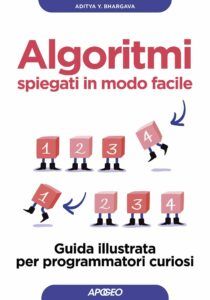Behind the scenes of AI
- Machine Learning with Python
- Big Data Analytics
- Algorithms explained easily
Do you think AI will give you a competitive advantage? At most it helps to stay afloat. AI is arriving on all apps, it is becoming increasingly immediate to launch and use, the supposed professional figure of prompt engineer will soon have to retrain as soon as enough people discover that asking the AI to fix a prompt works.
Instead, knowing how to set up a model for AI training makes the difference in time, costs and results. Very few have any idea about the machine learning techniques used on current models. It’s something that will continue to be useful even when the next AI arrives and prompts remain a curiosity of the past.
These three books can pave the way for you to become a data scientists: for you, for your company, for your passions.
Code and step-by-step tutorial to enter the heart of machine learning systems with Python.
The AI facade is the one with the prompt. Behind it there is an architecture that requires time and knowledge to be worked to its best.
If the model behind the AI is well looked after and organized, the AI’s responses themselves will be better. A model used to train AI has no special secrets; you need to learn how to do it and, with the help of a good programming language, interact with the system.
Read also: The three different types of machine learning and what they are used for
Machine Learning with Python teaches how to do it, with the Python language (one of the easiest) and the explanation of all the technologies that we will find on our path, as well as lots of examples to copy.
Go back to the beginning.
Know the data inside the machine learning models and treat them with a simple, professional, free graphical interface.
You can become an expert in machine learning by working on it; there is no need to be data scientists already before.
For beginners, it is possible to have the data presented by the computer in a simple and understandable way, thanks to a professional-level app called KNIME which, despite its capabilities, is free and compatible with any system.
Page after page, Big Data Analytics illustrates the concepts underlying the theory of machine learning and how to concretely apply them on our data without getting lost in technicalities, thanks to the facilitation function of KNIME.
Go back to the beginning.

Understanding the logic of a procedure explained to the computer helps us obtain superior results and save resources.
Understanding someone else’s cultural differences helps us in conversation and comparison and the same thing goes for computers, creatures whose processors have a way of proceeding in their “reasoning” that is different from ours
Computers work according to patterns of actions that we call algorithms and in spirit they are equivalent to cooking recipes: start from here, add this, mix for a few minutes, add what you need in the meantime, etc.
Algorithms explained easily takes away the mystery and unapproachability of algorithms: they are not just complicated things for programmers, but rather computer recipes which – with a text full of illustrations and examples – we can make our own more easily than ever and put them to use the moment we get closer to machine learning structures: the more fluid and elegant our ways of proceeding, the better the result.
Go back to the beginning.
Original opening image by the Apogeonline editorial team..
Tags: books learn machine learning






